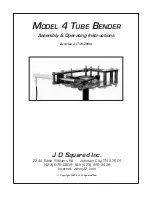
16
User's Guide ADI-6432R BNC © RME
9. Inputs
9.1 MADI
Both MADI inputs are located on the rear of the ADI-6432.
The BNC input's ground-free design is built according to AES10-1991. The input's impedance is
75 Ohm. It will operate without error from about 180 mVpp.
The optical input uses a FDDI (ISO/IEC 9413-3) compatible optical module, according to
AES10-1991. More information can be found in chapter 15.4, MADI Basics.
The ADI-6432 includes automatic input selection. In case the current input signal fails, the unit
switches to the other input immediately. This mode, called redundancy mode, offers improved
safety against errors on the transmission line. Switching the inputs is done in about one second.
The ADI-6432 displays redundancy operation by a blinking LED of the original input, while the
input LED of the currently active input will be lit constantly.
9.2 AES-3id
The 32 AES-3id inputs are provided on the rear of the ADI-6432R BNC via eight 32 BNC con-
nectors. Every input is transformer-coupled but not ground-free. The BNC sockets are con-
nected to the housing (GND). Channel status and copy protection are being ignored.
The inputs can be used in any combination, e. g. it is sufficient to connect an input signal only to
input 3. In slave mode, this input is automatically being used as clock source. If more than one
signal is present, the one furthest left is being used as clock source, i. e. the active input with
the lowest number.
The ADI-6432 supports single wire only, in the range of 32 kHz up to 192 kHz: a total of 64
channels, 2 channels per AES wire. The effective sample frequency equals the clock on the
AES wire. In case a conversion from/to Single, Double and Quad Wire is required, the ADI-192
DD, an 8-channel universal sample rate and format converter, is highly recommended.
Note: In Double Speed mode only inputs 1-16 (channel 1-32) are operational, in Quad Speed
mode inputs 1-8 (channel 1-16).
Emphasis
AES/EBU and SPDIF can contain an Emphasis information. Audio signals with Emphasis have
a strong high frequency boost and thus require a high frequency attenuation on playback.
An Emphasis indication gets lost! This information is neither passed on to the MADI output,
nor to any of the AES outputs!
Summary of Contents for ADI-6432(r)
Page 5: ...User s Guide ADI 6432R BNC RME 5 User s Guide ADI 6432R BNC General...
Page 13: ...User s Guide ADI 6432R BNC RME 13 User s Guide ADI 6432R BNC Usage and Operation...
Page 25: ...User s Guide ADI 6432R BNC RME 25...
Page 28: ...28 User s Guide ADI 6432R BNC RME...
Page 29: ...User s Guide ADI 6432R BNC RME 29 User s Guide ADI 6432R BNC Technical Reference...
Page 37: ...User s Guide ADI 6432R BNC RME 37 16 Block Diagram...
















































